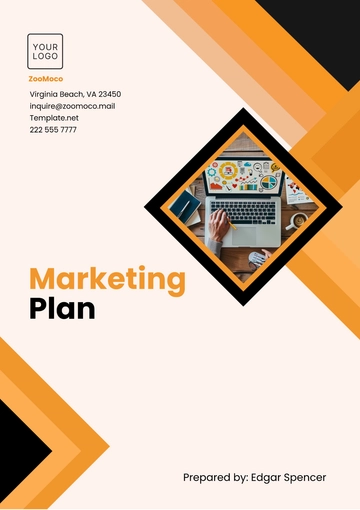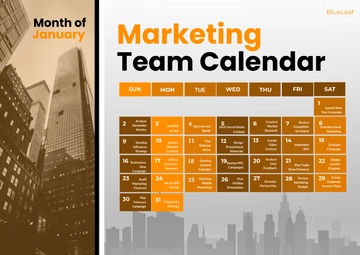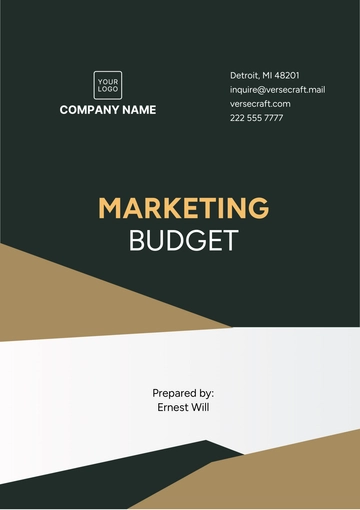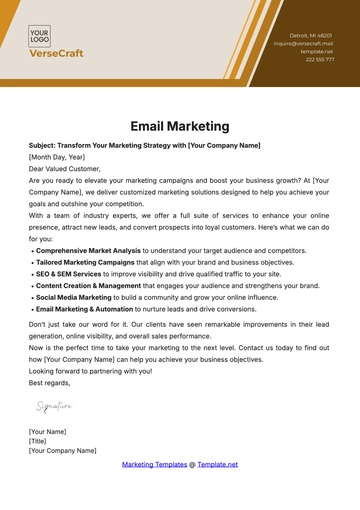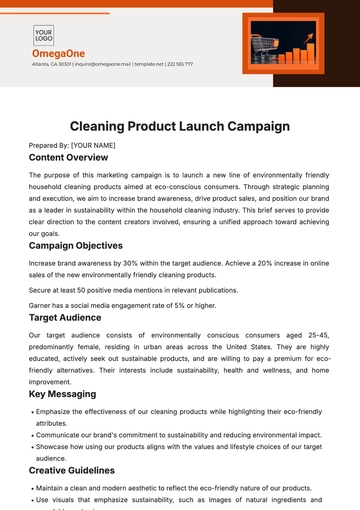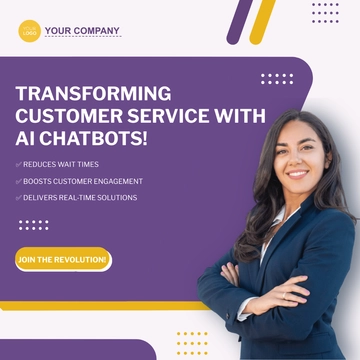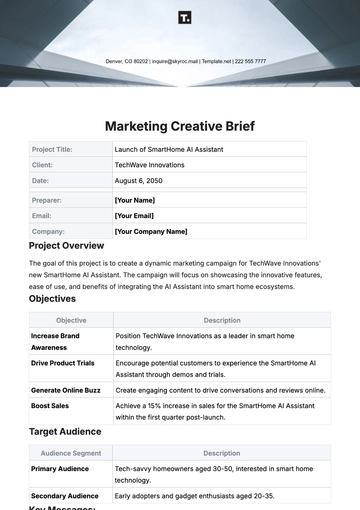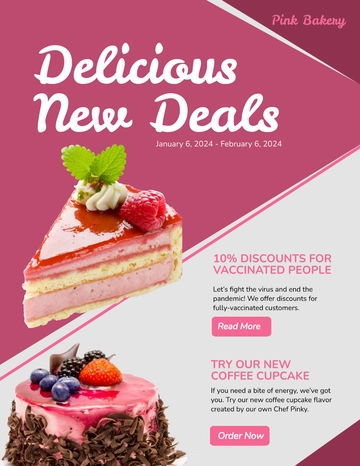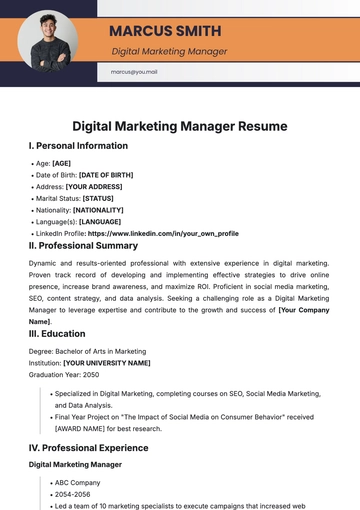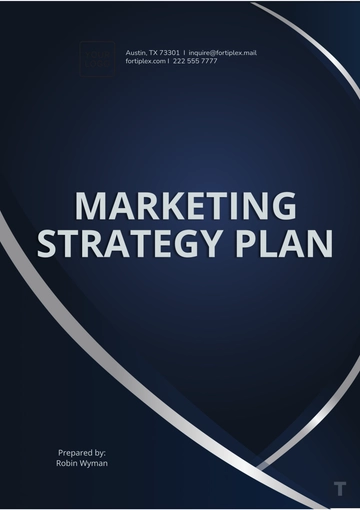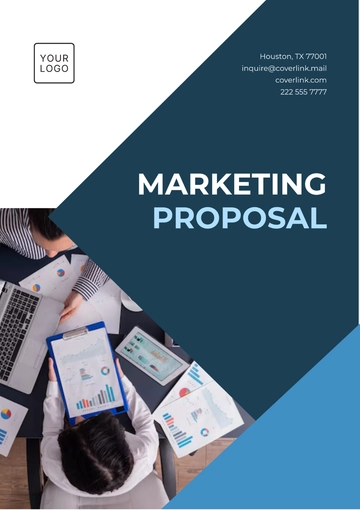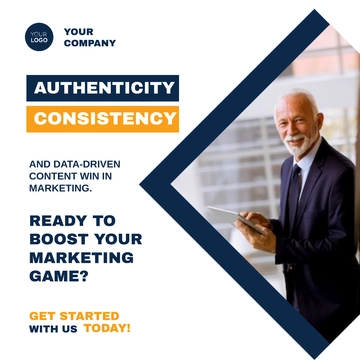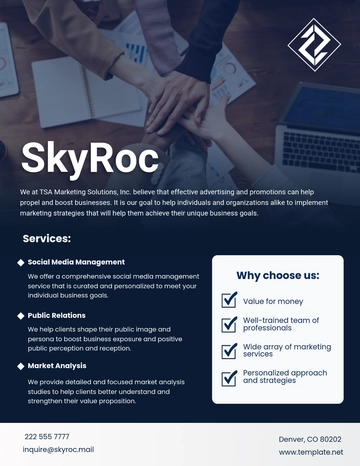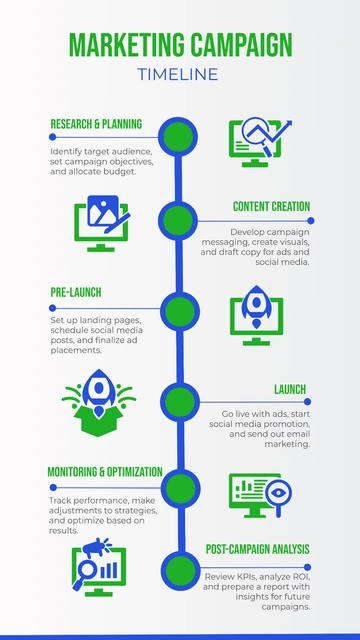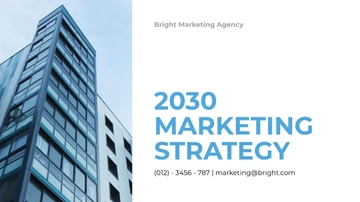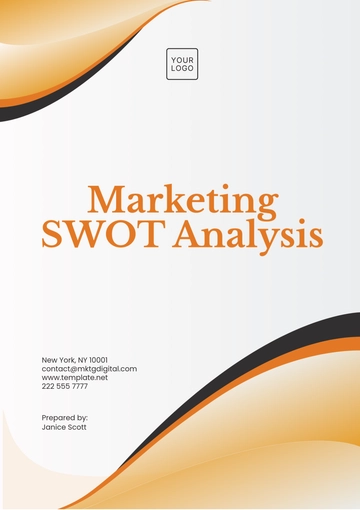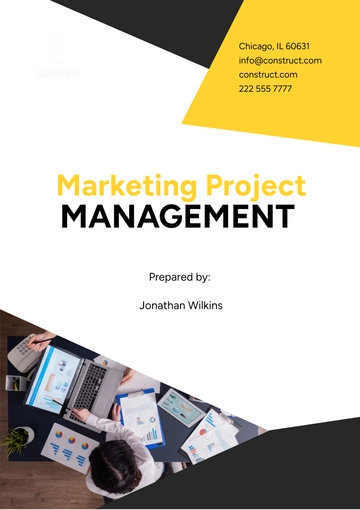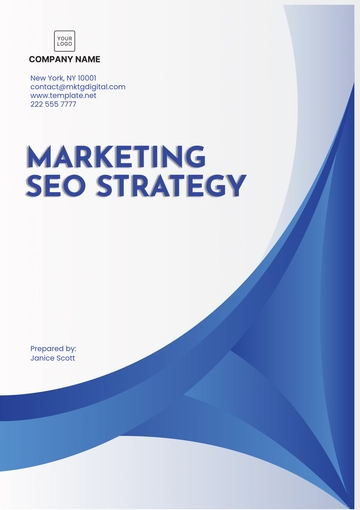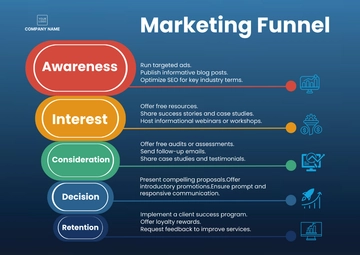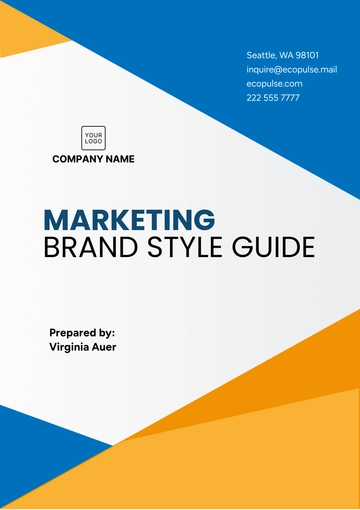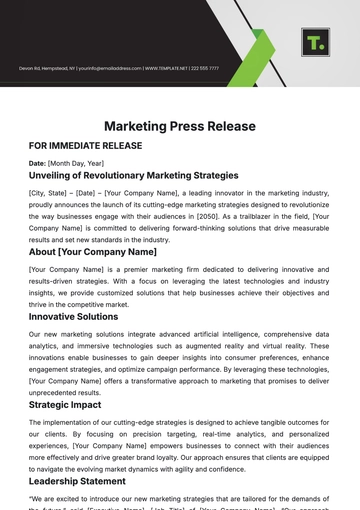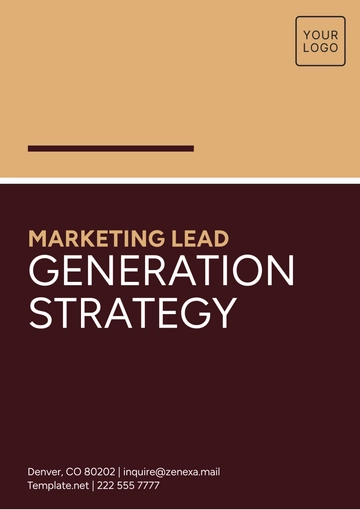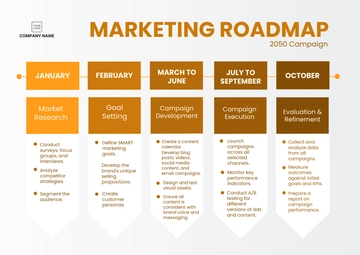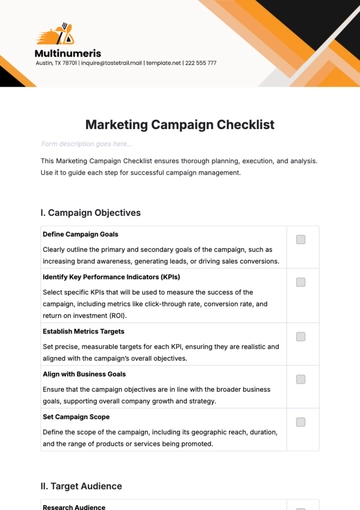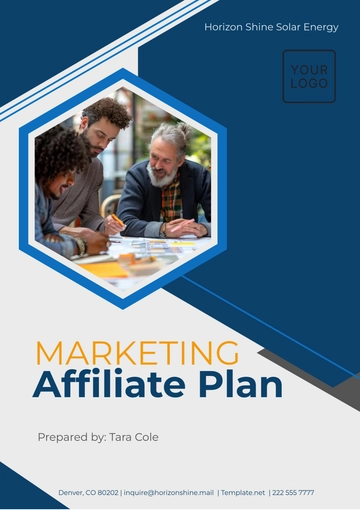Free Hotel Marketing Strategy
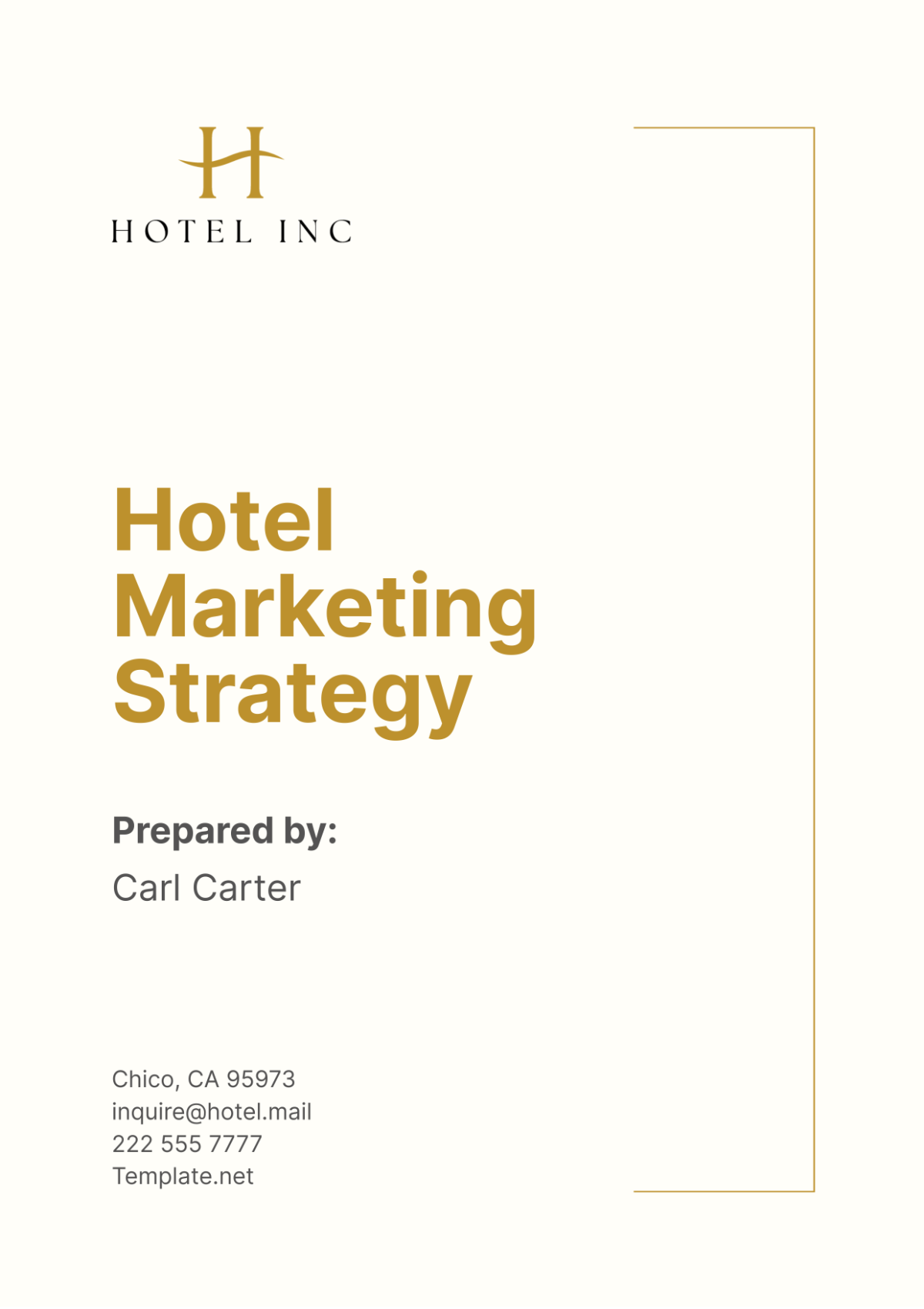
I. Executive Summary
This Hotel Marketing Strategy is prepared by [Your Name] at [Your Company Name] to enhance the visibility, market reach, and occupancy rates of our hotel. The strategy encompasses various modern marketing techniques, including digital marketing, social media engagement, and traditional marketing methods. Our primary goal is to leverage these tools to attract more guests, improve brand loyalty, and ultimately boost our revenue.
Key objectives will focus on understanding our target audience, enhancing guest experiences, and promoting our hotel through different channels. This strategy document will provide a comprehensive roadmap that details specific actions, timelines, and KPIs to measure success. By aligning our marketing activities with our overall business goals, we aim to create a seamless and effective marketing approach.
II. Market Analysis
Conducting a thorough market analysis is essential for identifying our hotel's unique selling points, understanding the competitive landscape, and recognizing market trends. This section outlines our market research findings and how they will inform our marketing strategies.
Market Segmentation
Our market consists of both leisure and business travelers. By segmenting these groups, we can create targeted campaigns to address their specific needs:
Leisure Travelers: Seek relaxation, entertainment, and recreational activities. Typically, they are families, couples, and solo tourists.
Business Travelers: Require convenience, business facilities, and efficient services. They include professionals attending conferences, meetings, or corporate events.
Event Organizers: Look for venues with flexible spaces, catering options, and event planning services. They organize weddings, conventions, and large gatherings.
Competitive Analysis
Analyzing competitors allows us to identify gaps in their offerings that we can exploit to differentiate our hotel.
Competitor | Strengths | Weaknesses | Opportunities | Threats |
|---|---|---|---|---|
Hotel A | High-quality service, luxury amenities | High pricing, limited family packages | Improve value-for-money offerings | Aggressive marketing campaigns |
Hotel B | Affordable pricing, good location | Inconsistent service quality, outdated decor | Modernize facilities, enhance service | Competitive pricing pressure |
Hotel C | Excellent customer reviews, strong brand | Limited event space, high occupancy rates | Expand event facilities | High customer expectations |
Hotel D | Diverse amenities, eco-friendly practices | Less online presence, outdated website | Enhance digital marketing efforts | Rising operational costs |
Market Trends
Identifying current and future trends in the hospitality industry helps us stay competitive. These trends not only shape guest expectations but also influence our strategic decisions. By staying ahead of these trends, [Your Company Name] can enhance guest satisfaction, operational efficiency, and overall market position. The key trends we are focusing on include sustainability, technology integration, and personalization.
Sustainability
The demand for eco-friendly practices in the hospitality industry is on the rise, driven by an increasing awareness of environmental issues among consumers. Guests are now more inclined to choose hotels that demonstrate a commitment to sustainability. This trend is not just about appealing to environmentally conscious travelers but also about long-term cost savings and regulatory compliance.
Key Aspects of Sustainability:
Energy Efficiency: Implementing energy-saving measures such as LED lighting, energy-efficient appliances, and smart thermostats can significantly reduce our hotel's carbon footprint. Solar panels and renewable energy sources are also becoming more cost-effective and can further enhance our sustainability efforts.
Water Conservation: Techniques such as low-flow fixtures, water recycling systems, and rainwater harvesting can help reduce water usage. Educating guests on water conservation and offering options like towel and linen reuse programs can also contribute.
Waste Reduction: Reducing waste through recycling programs, composting organic waste, and minimizing single-use plastics are crucial steps. Partnering with local suppliers for sustainable products and sourcing food locally can further reduce our environmental impact.
Green Building Practices: Incorporating sustainable design elements in our buildings, such as green roofs, energy-efficient windows, and sustainable materials, not only helps the environment but can also improve indoor air quality and guest comfort.
Technology Integration
The integration of advanced technologies in the hospitality industry is reshaping guest experiences and operational efficiencies. Technology is no longer just a convenience but a necessity to meet the modern guest's expectations.
Key Technological Innovations:
Digital Check-Ins and Check-Outs: Providing guests with the ability to check in and out using their mobile devices enhances convenience and reduces wait times. This seamless process can be complemented by digital key systems that allow guests to access their rooms via smartphone apps.
Mobile Bookings: Ensuring our website and booking systems are mobile-friendly is essential, as a significant portion of bookings now occur on mobile devices. An intuitive, user-friendly mobile interface can increase direct bookings and improve the overall guest experience.
AI-Driven Customer Service: Artificial intelligence can be leveraged to provide personalized customer service. Chatbots can handle routine inquiries and booking processes, while AI algorithms can offer personalized recommendations based on guest preferences and behaviors.
Smart Room Technology: Offering smart room features such as voice-activated assistants, smart lighting, and climate control can enhance the in-room experience. These technologies not only provide convenience but can also contribute to energy efficiency.
Personalization
Personalization has become a critical aspect of the guest experience. Today’s travelers expect services and experiences tailored to their individual preferences. Personalization can drive guest satisfaction, loyalty, and repeat business.
Key Strategies for Personalization:
Customized Offers and Promotions: By analyzing guest data, we can create personalized offers and promotions. For instance, returning guests might receive special discounts or packages based on their past stays and preferences.
Tailored In-Room Amenities: Providing amenities that cater to specific guest needs, such as dietary preferences, preferred toiletries, or special requests, can make guests feel valued and enhance their stay.
Personalized Communication: Utilizing CRM systems to track guest preferences and interactions allows us to send personalized messages and recommendations. Pre-arrival emails with tailored suggestions for activities, dining, and services can enhance the guest experience.
Experience Customization: Offering personalized itineraries, concierge services that cater to individual interests, and activities that align with guest preferences can create memorable experiences. Technology can aid in collecting and analyzing data to refine and improve personalization efforts continuously.
By focusing on these trends, [Your Company Name] can not only meet but exceed guest expectations, positioning ourselves as a leader in the competitive hospitality market. Sustainability, technology integration, and personalization are not just trends; they are essential components of our strategic vision for the future.
III. Target Audience
The target audience for [Your Company Name] includes leisure travelers, business professionals, and event organizers. Understanding their demographics, psychographics, and behavior allows us to tailor our marketing messages effectively.
Leisure Travelers
Demographics: Families, couples, and solo travelers aged 25-55.
Psychographics: Value relaxation, recreation, and unique experiences.
Behavior: Book vacations during holidays, weekends, and peak travel seasons.
Business Travelers
Demographics: Professionals aged 30-60.
Psychographics: Prioritize convenience, efficiency, and business amenities.
Behavior: Travel frequently for meetings, conferences, and corporate events.
Event Organizers
Demographics: Event planners and coordinators aged 35-50.
Psychographics: Seek venues with comprehensive event services and flexibility.
Behavior: Plan events well in advance, often during off-peak seasons to maximize budget.
Audience Segmentation Table
Segment | Demographics | Psychographics | Behavior |
|---|---|---|---|
Leisure Travelers | Families, couples, solo travelers, 25-55 | Value relaxation, recreation, unique experiences | Book vacations during holidays, weekends, peak seasons |
Business Travelers | Professionals, 30-60 | Prioritize convenience, efficiency, business amenities | Travel frequently for meetings, conferences, events |
Event Organizers | Event planners, 35-50 | Seek venues with comprehensive event services | Plan events well in advance, often during off-peak seasons |
IV. Marketing Objectives
Our primary marketing objectives are to increase brand awareness, improve customer engagement, and boost occupancy rates. These objectives will be achieved through a mix of online and offline marketing efforts tailored to our target audience.
Specific Objectives
Increase Brand Awareness: Enhance our visibility through strategic marketing campaigns and partnerships.
Target: Increase social media following by 20% within the next year.
Improve Customer Engagement: Foster stronger connections with our guests through personalized interactions and valuable content.
Target: Boost engagement rates on social media by 30%.
Boost Occupancy Rates: Attract more guests through targeted promotions and optimized booking processes.
Target: Achieve an average occupancy rate of 85% throughout the year.
Increase Direct Bookings: Encourage guests to book directly through our website, reducing reliance on third-party platforms.
Target: Increase direct bookings by 15%.
Key Performance Indicators (KPIs)
Objective | KPI | Target |
|---|---|---|
Increase Brand Awareness | Social Media Following | 20% increase |
Improve Customer Engagement | Social Media Engagement Rate | 30% increase |
Boost Occupancy Rates | Average Occupancy Rate | 85% |
Increase Direct Bookings | Direct Booking Rate | 15% increase |
V. Marketing Strategies
Our marketing strategies will be multi-faceted to cover a broad spectrum of promotional activities. These strategies are designed to leverage both digital and traditional channels to maximize our reach and effectiveness.
Content Marketing
Generate valuable content such as blog posts, videos, and customer testimonials to attract and engage our audience.
Blog Posts: Regularly publish articles on travel tips, local attractions, and hotel updates.
Videos: Create video tours of our hotel, behind-the-scenes looks, and guest testimonials.
Customer Testimonials: Showcase positive reviews and experiences from past guests.
Email Marketing
Develop personalized email campaigns to keep our audience informed about special offers, events, and news.
Newsletters: Monthly newsletters featuring hotel news, promotions, and local events.
Special Offers: Targeted emails with exclusive discounts and package deals.
Event Invitations: Personalized invitations to upcoming events and promotions.
Social Media Marketing
Utilize platforms like Facebook, Instagram, and LinkedIn to connect with prospective guests and share engaging content.
Facebook: Share updates, promotions, and engaging content to build a community.
Instagram: Post visually appealing photos and stories to attract leisure travelers.
LinkedIn: Engage with business professionals and promote our conference facilities.
SEO & SEM
Optimize our website for search engines and leverage paid advertising to increase our online visibility.
SEO: Conduct keyword research and optimize website content to improve search rankings.
SEM: Invest in Google Ads and other paid search campaigns to drive traffic to our website.
Influencer Partnerships
Collaborate with influencers to reach a wider audience and build credibility.
Travel Bloggers: Partner with travel bloggers to review and promote our hotel.
Social Media Influencers: Engage influencers to share their experiences and attract their followers.
VI. Budget Allocation
A detailed budget is essential for executing our marketing strategy effectively. Below is an estimated budget breakdown across different marketing channels:
Budget Allocation Table
Category | Estimated Budget | Percentage of Total Budget |
|---|---|---|
Digital Marketing | $150,000 | 60% |
- Social Media Advertising | $60,000 | 24% |
- SEO & SEM | $50,000 | 20% |
- Content & Email Marketing | $40,000 | 16% |
Traditional Marketing | $100,000 | 40% |
- Print Advertisements | $40,000 | 16% |
- Travel Agency Partnerships | $30,000 | 12% |
- Trade Shows and Events | $30,000 | 12% |
Total | $250,000 | 100% |
Justification of Budget Allocation
Digital Marketing:
Social Media Advertising ($60,000): Social media platforms offer targeted advertising options that allow us to reach specific demographics and increase engagement.
SEO & SEM ($50,000): Investing in SEO and SEM enhances our online visibility, driving organic and paid traffic to our website, which is essential for increasing direct bookings.
Content & Email Marketing ($40,000): Creating high-quality content and personalized email campaigns helps in engaging our audience and encouraging repeat bookings.
Traditional Marketing:
Print Advertisements ($40,000): Print media still holds value, especially for reaching local audiences and older demographics.
Travel Agency Partnerships ($30,000): Collaborating with travel agencies helps in tapping into a network of potential guests who prefer booking through trusted agents.
Trade Shows and Events ($30,000): Participating in industry trade shows and events enhances our brand presence and allows us to network with potential partners and guests.
VII. Implementation Plan
An effective implementation plan is crucial for executing our strategies seamlessly. This section outlines the steps we will take to roll out our marketing initiatives.
Implementation Timeline
Activity | Q1 | Q2 | Q3 | Q4 |
|---|---|---|---|---|
Campaign Kickoff Meeting | X | |||
Content Marketing Launch | X | |||
Email Marketing Campaigns | X | X | X | X |
Social Media Advertising | X | X | X | X |
SEO & SEM Implementation | X | |||
Influencer Partnerships | X | |||
Print Advertisements | X | |||
Travel Agency Partnerships | X | |||
Trade Shows and Events | X | |||
Performance Review Meetings | X | X | X | X |
Responsibilities
Marketing Manager: Oversee the implementation of all marketing activities, ensuring alignment with overall strategy.
Content Team: Create and manage content for blog posts, videos, and email campaigns.
Social Media Team: Develop and execute social media strategies and manage influencer partnerships.
SEO & SEM Specialist: Optimize website content and manage paid search campaigns.
Traditional Marketing Team: Handle print advertisements, travel agency partnerships, and trade show participation.
VIII. Performance Measurement
To measure the effectiveness of our marketing strategies, we will use various KPIs, including website traffic, social media engagement, conversion rates, and occupancy rates. Tracking these metrics will help us understand what’s working and where we need to make improvements.
KPIs and Metrics
KPI | Metric | Target | Reporting Frequency |
|---|---|---|---|
Website Traffic | Unique Visitors | 20% increase | Monthly |
Social Media Engagement | Likes, Shares, Comments | 30% increase | Monthly |
Conversion Rates | Booking Conversions | 15% increase | Quarterly |
Occupancy Rates | Average Occupancy | 85% | Monthly |
Direct Bookings | Direct Booking Percentage | 15% increase | Monthly |
Reporting and Review
Monthly Reports: Detailed reports on website traffic, social media engagement, and direct bookings.
Quarterly Reports: Comprehensive analysis of conversion rates and occupancy rates.
Annual Review: Overall performance evaluation and strategic adjustments for the next year.
IX. Conclusion
By following this comprehensive Hotel Marketing Strategy, [Your Company Name] is positioned to achieve its marketing objectives and enhance its brand presence. With detailed planning, effective execution, and ongoing performance measurement, we aim to attract more guests, improve their experience, and ultimately drive revenue growth.
Collaboration and commitment from all team members are essential for the successful execution of this strategy. We look forward to implementing these initiatives and achieving our marketing goals.
For further details or inquiries, please contact:
[Your Name]
[Your Company Name]
Email: [Your Company Email]
Phone: [Your Company Number]
Website: [Your Company Website]
- 100% Customizable, free editor
- Access 1 Million+ Templates, photo’s & graphics
- Download or share as a template
- Click and replace photos, graphics, text, backgrounds
- Resize, crop, AI write & more
- Access advanced editor
Craft a winning marketing strategy for your hotel with the Hotel Marketing Strategy Template from Template.net. This versatile template is designed to guide you through the process of developing a tailored marketing plan that will attract more guests and boost revenue. With editable sections and customizable features, you can adapt the strategy to suit your hotel's unique brand and objectives. Elevate your marketing efforts and drive bookings with ease using this comprehensive template.
You may also like
- Marketing Google Slide
- Marketing Letter
- Marketing Quotation
- Marketing Report
- Marketing Strategic Plan
- Marketing Plan
- Marketing Proposal
- Marketing Flyer
- Marketing Presentation
- Real Estate Marketing Plan
- Marketing Contract
- Marketing Agreement
- Marketing Resume
- Marketing Checklist
- Marketing Brochure
- Marketing Banner
- Marketing Schedule
- Marketing Vector
- Marketing Logo
- Marketing Chart
- Marketing Campaign Plan
- Marketing Budget
- Marketing Postcard
- Marketing Poster
- Marketing Facebook Post
- Marketing Instagram Post
- Marketing Newsletter
- Marketing Infographic
